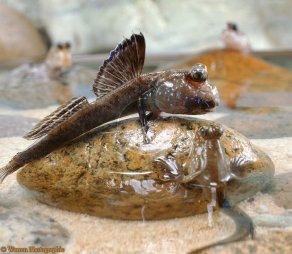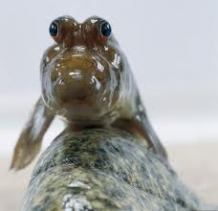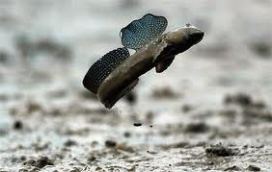11 days?!?!? I can’t believe that we will be departing for Yap in 11 days. I am getting more and more excited as I check things off my YAP to do list. Cot? Check. Scuba gear? Check. Duffle bag that my cot will fit in? Double check, for the win, (no extra $140 for this girl). As excited as I am, I’m almost just as nervous. I have never traveled internationally, that I can recall but I know that this will be a grand first experience. Our class is such a phenomenal group of people and I couldn’t be happier to know that these are the people that I will be spending the next 3 weeks with in a tiny room on humid, tropical island the middle of the Pacific Ocean. The dive class that we took with gsully made me realize that its really happening, although I don’t think my excitement will really hit until we on the plane and maybe even til we get there. I think I am most excited to meet the people we will be working with and enjoying getting to see pieces of the culture of Yap that other travelers don’t get the privilege to experience.
Author Archives: asloan92
Geology is Destiny!
As our class has heard over and over again, “Geology is Destiny!” Well, what in blue blazes, does that even mean??? It means that the culture, people, and ecosystems of Yap are direct reflections of Yap’s geological makeup and location. The people of Yap and the FSM have learned to act and live in a certain way because they are a small, isolated island chain in the middle of the Pacific. Because Yap is a small island everyone knows everyone. Similarly, the family unit was constructed to be a large, extended, multi-generational unit that lived together or in very close proximity. This family unit that included aunts,uncles, cousins, grandmothers, grandfathers helped to raise the children, cook food, and also was a means of protection.
Another result of Yap’s geology is the Yap and outer Islanders “sawei” relationship. “Sawei” is a tribute system in which the outer islanders would bring gifts to Yap (via Gagil) when the outer islands were doing well in order to stay in Yap’s good graces. On the other side Yap would protect or send supplies to the outer islands in bad times.Yap would also let the outer islanders live on Yap for a short period of time if the outer island was flooded because many of the outer islands were coral atolls that were uninhabitable if it rained heavy for long periods of time. The “sawei” relationship is based the idea of reciprocity, you scratch my back and I’ll scratch yours. Because of this system Yap and the Outer Islands had a parent-child relationship and a kind of caste system or hierarchy developed. One of the ways that Yap’s people were in higher villages were because they actually owned land on Yap.
Mudskippers in the Mangroves
What is a mudskipper you might ask? It is funny looking amphibious fish, that inhabit the mangroves of the Pacific Islands.
Mudskippers have fins and a tail like a fish but can breathe out of the water. They have gills which can hold a bubble of oxygen in, allowing them to “breathe” air and underwater; but they can only do this if their gills stay wet. They can also maneuver on land by using their fins and tail to hop or skip across the land, giving it it’s name. They are quite speedy in these movements, so quick that little research has been done on them because they are extremely hard to catch.
Unlike most of the mangroves inhabitants, these little guys spend their entire lives in the mangroves. They are one of the only true natives of the of the mangrove, appropriately so. The mangrove is a half-marine, half-forest ecosystem which mirrors the mudskippers’ lifestyle. While they live on both land and in water, they hunt almost exclusively on land feasting on insects, small crustaceans, and worms.
Mudskippers in Yap build Y-shaped burrows in the marine inter tidal soil in the mangroves. But because water doesn’t get in these burrows, they can become oxygen deficient. The mudskippers then gulp oxygen and exhale them in the burrows to create a pocket of air. They create these burrows with their mouths, taking a mouthful of mud and spitting it out at the edge of its territory, creating a wall barrier for their home.
Another interesting characteristic of the mudskipper is its eyes, sitting on top of the mudskipper’s head, not on each side like a fish. Each eye works independent of each other, similar to a chameleon allowing them to see above and below the water at the same time. The upper part of the eyes can only see black and white utilizing the rods, surveying for predators. While the bottom part of the eye is equipped with cones which allow them to see color.
I think the most fascinating thing about the mudskipper is when it comes to the mudskipper’s mating season. In order to impress the females, the males will do push-ups with their fins. The males will also leap into the air and if the female is impressed she will follow him back to his burrow.
Beaches, Boulders, and Boobies : My first impression of Yap
The first time I heard about Yap was during soccer practice my freshman year at Queens. Kat, Kelsey, Sarah Beth were Juniors on my soccer team and they wouldn’t shut up about this place: how excited they were, their daily countdowns to their departure, how awesome their group was, how cool the professors were, getting the chance to scuba dive, the list could go on. So I was immediately influenced by these girls and others that went on this trip two years ago to apply to go to Yap. After they got back from their trip, they continued to rave about it so I was obviously interested in looking at Yap for my trip.
So when it was time to decide where I wanted to go on my JBIP I didn’t want to rule out any places immediately but I knew that Yap would be a phenomenal trip. I knew that I wanted to use my JBIP to experience a place where I may never get the chance to go again. After looking over the different locations, Yap was truly the best option for what I wanted to get out of the trip.
After applying and hearing that I was accepted, I was ecstatic. My uncle is a master diver so I called him to tell him the news. He was so envious. He had been diving all over the world for over 20 years and never been to this area of the Pacific. He told me all about Palau, where his best friend had just returned from a diving trip but didn’t know much about Yap except that it was world-renown for its diving. He wanted to know all the details that I didn’t quite have yet.
After talking to him, I wanted to know more about this island that I would be traveling to. So like any curious person, I turned to Google. Googling Yap brought images of beautiful landscapes of beaches, giant stone discs, and quite a few bare chested females.
Learning more about Yap in this class has taught me that, these bare chested ladies are not how all women on Yap dress and that this is typical of the outer islander women. I have also learned that these large round rocks were once valuable forms of currency and trade because of their journey and how difficult there were to come by. Although this fei or stone money is no longer used to pay for things as it was historically, it still has a sacredness surrounding it. They are used more today as a gift of respect to a village that has been wronged. For example, if a teenager from village A vandalizes village B, it is village A’s duty to repay village B in order to keep peaceful relations.
Now looking back to freshman year, I can completely understand why those that went on this trip two years ago couldn’t stop talking about their excitement. I am in the same boat now and rave to everyone about how amazing I know our trip will be.


